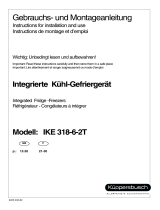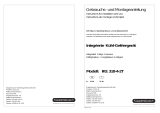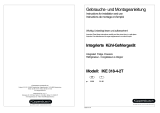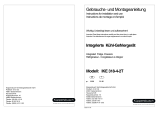78
What to do if ...
Correcting Malfunctions
A malfunction may be caused by only a minor fault that you can rectify
yourself using the following instructions. Do not perform any other work on
the appliance if the following information does not provide assistance in
your specific case.
Warning! Repairs to refrigerators/freezers may only be performed by
qualified service engineers. Improper repairs can give rise to significant
hazards for the user. If your appliance needs repairing, please contact your
specialist dealer or our Customer Service.
Malfunction Possible Cause Remedy
Appliance does not work, no
pilot light is illuminated.
Appliance is not switched on Switch on the appliance.
Mains plug is not plugged in
or is loose.
Insert mains plug.
Fuse has blown or is defective.
Check fuse, replace if
necessary.
Socket is defective.
Mains malfunctions are to be
corrected by an electrician.
The freezer temperature is not
sufficient, red light lights up,
temperature signal sounds
The appliance is near a heat
source.
Temperature is not properly
adjusted.
Please look in the "Initial Start
Up" section.
Press the FROSTMATICbutton
Door was open for an
extended period.
Please look in the "Installation
location" section.
Disturbance on the appliance
Switch on the FROSTMATIC
button, keep the freezer
closed, inform your customer
service
A large quantity of warm food
was placed in the appliance
within the last 24 hours.
Open the door only as long as
necessary. Press the
FROSTMATIC button
Green light does not light up,
yellow light lights up when
fast freeze fuction is
activated, appliance is on.
Green light faulty.
Please inform your customer
service
Appliance cools too much. Temperature is set too cold.
Turn the temperature
regulator to a warmer setting
temporarily.
Yellow light does not light up,
when fast freeze fuction is
activated, appliance is on.
Yellow light faulty.
Please inform your customer
service
























